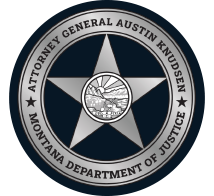Montana Human Trafficking Hotline
Call or Text 1-833-406-STOP (7867)
If you or someone you know is in immediate danger call 911
Help Stop Human Trafficking in Montana
Human trafficking occurs in Montana. The number of cases tracked by the Montana Department of Justice increased from 7 in 2015 to 143 in 2023, an increase of 1,900 percent. In order to end the problem, everyone must first know it exists. Once people are aware of trafficking and sexual slavery, everyone can work together to help stop this worldwide criminal epidemic.
According to the U.S. Department of Homeland Security, “Human trafficking involves the use of force, fraud, or coercion to obtain some type of labor or commercial sex act.” A commercial sex act is the giving or receiving of anything of value (money, drugs, shelter, food, clothes, rent payment, etc.) to a person in exchange for a sex act.
Unfortunately, for many men, women, and children, they are targeted as easy prey, and these victims are often recruited using “psychological kidnapping.” Traffickers find and exploit the unique vulnerabilities in their victims, often using false promises of a better life (e.g., a feeling of belonging, financial security, or a chance for new opportunities). Following these claims – that seem legitimate at first- the trafficker uses a variety of tactics to ensure compliance. They beat, rape, deprive the victim of –sleep or food, isolate them from family, threaten the victim’s family and/or friends, and use other psychological abuse.
The Montana Department of Justice has a continued commitment to survivors of human trafficking – and to crack down on the predators perpetrating this horrific crime. The Attorney General’s Office and Montana Department of Justice play a key role in the investigation, enforcement, and prosecution of crimes related to human trafficking in Montana along with federal and local partners. This form of modern-day slavery does happen here in Big Sky Country. Learn the warning signs and resources available to help.
Know the Signs. Potential indicators of sex trafficking may include:
- Young person that is very hesitant to engage in conversation. Eyes are always downcast, avoiding eye contact, especially with men. Poor physical state…tired, malnourished, or shows signs of physical abuse or torture.
- Seems to have trouble responding to what their name is or what location (City or even State) they are in. (Victims’ names are often changed frequently, as are their whereabouts. They typically do not stay in one location for long – at times for 24 hours or less).
- Wearing clothes that do not fit the climate or the situation such as short shorts or skirts, tank tops, and no jacket in the middle of winter.
- Lack of control over, money, personal possessions like bags, ID’s,or documents. May also be carrying very few possessions in a plastic bag.
- May be accompanied by a dominating person, or someone they seem fearful of. That controlling person may also be someone who does not seem to “fit,” such as a much older individual, an individual of a different race, or with behavior seemingly inappropriate with the suspected victim.
- Young girl or boy hanging around outside a convenience store, truck stop, casino, or other location. May be approaching different vehicles or men they do not seem to know.
Above all: Trust your gut. You know when something is not right. YOU CAN BE PART OF THE SOLUTION.
If you believe you witness human trafficking:
- If the situation is an emergency, call 911
- Do not intervene if you see suspected trafficker(s). Remain at a safe distance or in your vehicle.
- In non-emergency situations, call or text 1-833-406-STOP (1-833-406-7867) OR reach and advocate via live chat at 406stop.com.
- When possible, take images with your cellular device of the suspected trafficker(s), victim(s), and vehicle license plate(s).
Presentations
If your organization or civic group would like a presentation about human trafficking, contact our office at (406) 444-1776 or email us at: [email protected]
Resources
Enlightened Curriculum
This curriculum was developed by the Montana Department of Justice for parents and teachers to raise awareness and educate their students about human trafficking and online exploitation.
- Enlightened Video, Human Trafficking Short Version
- Enlightened Video, Human Trafficking Long Version
- Enlightened Human Trafficking Student Discussion Guide
Video
Print Materials
- Sentinel Project – Montana Trafficking 101 Guide
- Sentinel Project – 24×36 Poster
- MCA 44-4-1501 – 11×17 Poster
- New Beginnings Tattoo Removal Program
Other Organizations
- Deliver Fund – https://www.deliverfund.org/
- End Exploitation Montana – https://www.endexploitationmontana.org/
- HER Campaign – https://hercampaign.org/
- The LifeGuard Group – https://thelifeguardgroup.org/
- MBWDA’s Sentinel Project – https://mbwda.org/sentinel-project
- Montana Human Trafficking Hotline – https://406stop.com/
- National Human Trafficking Hotline – https://humantraffickinghotline.org/state/montana
- Truckers Against Trafficking – http://www.truckersagainsttrafficking.org/
- No Room for Trafficking (American Hotel and Lodging Association) – https://www.ahlafoundation.org/nrft/
These organizations and services are provided for information only. This does not constitute an endorsement by the Attorney General’s Office or the Montana Department of Justice.
